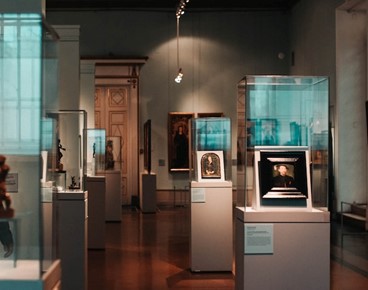Techniques for Protecting and Restoring Art

Art is a significant part of human culture, as it has been for centuries. We can see the value of our art in museums, galleries, and collections around the world. Preserving that art is a challenging task, though, as the materials used to initially create a piece may deteriorate over time. Restoring art can be even more daunting, as it requires a perfect balance between delicate preservation of the original work and improving its condition.
Freddi Wald explains that techniques for protecting artwork include climate-controlled environments, minimal light exposure, and chemical conservation. Restoration can include repairs to damages such as wrinkling, tears, cracks, or flaking paint. Cleaning is also essential to this process.
The ‘before and after’ difference between a work of art before it has been restored and afterwards is often as clear as night and day.
Protecting Art
The first step in protecting art is preventing damage. Such measures can be achieved by controlling the environment in which the art is stored or displayed.
Some factors that can damage art include humidity, temperature, light, pests, and pollution. To protect prized pieces from these factors, museums and galleries use climate-controlled environments and storage facilities. They also limit the amount of time that the artwork is exposed to light and create barriers that keep pests away.
Another technique for protecting art is conservation. This involves the use of chemicals along with other methods to prevent or slow down the deterioration of artwork. For example, conservationists may apply a protective coating to the piece or use UV-resistant glass to protect it from light damage.
Restoring Art
Restoring art involves repairing damage that has already occurred. This can include mending cracks, tears, or discoloration. The goal of art restoration is to being the artwork back to its original condition while preserving its authenticity.
Another technique used for almost all artwork is cleaning. Dirt, dust, and grime will accumulate on paintings over time, obscuring the original colors and details. Cleaning helps to reveal the original artwork underneath. However, this is an intricate and delicate process, essential to be performed by experienced professionals using the proper tools and cleaning compounds.
Retouching is another common method, which involves applying paint or other materials to the artwork to repair areas that have been damaged or lost over time. The goal of retouching is to make the repairs as unobtrusive as possible, so the piece still appears as it did originally.

In Closing
Protecting and restoring fine art pieces requires a delicate balance between preserving the artwork and improving its condition. By controlling the environment in which the artwork is stored or displayed, museums and galleries can prevent damage from occurring in the first place.
Conservation and cleaning techniques can also be used to protect the artwork from deterioration. In the instance where damage has already occurred to a piece, restoration techniques such as retouching can be used to repair the artwork to its original beauty. By using these techniques, we can ensure that our cultural heritage is preserved for future generations to enjoy.